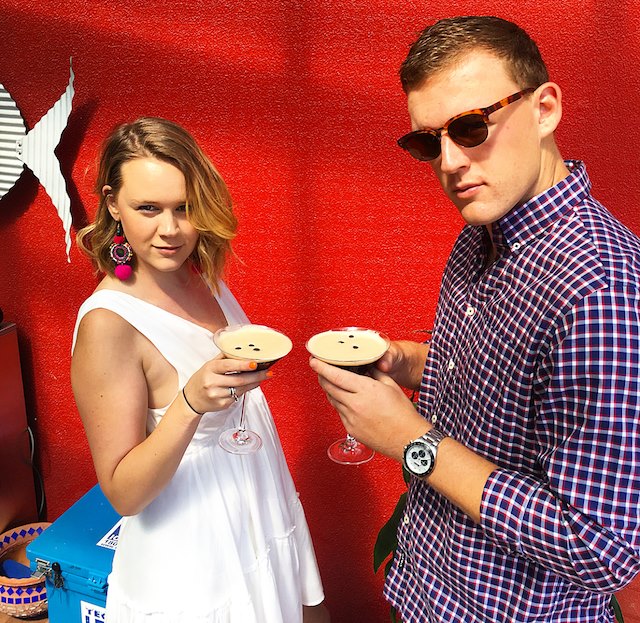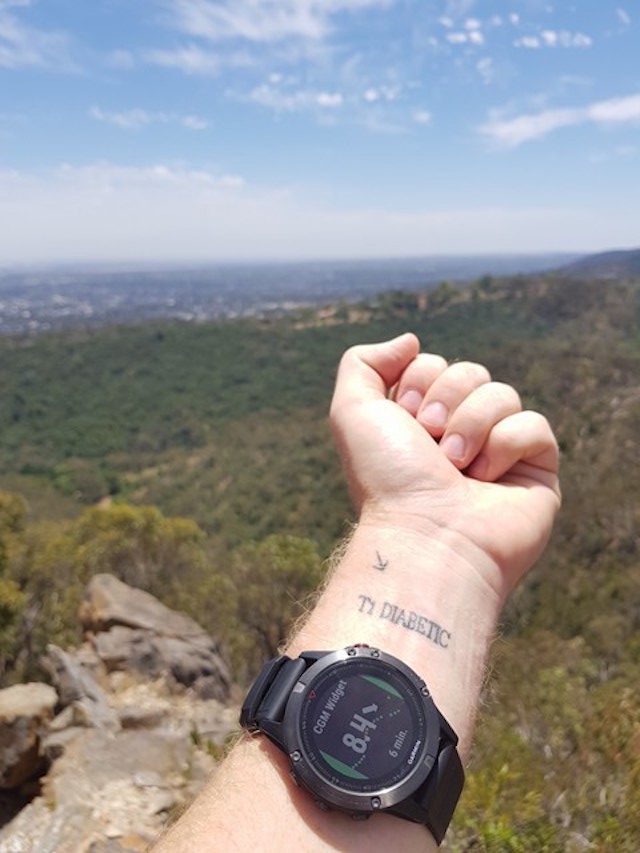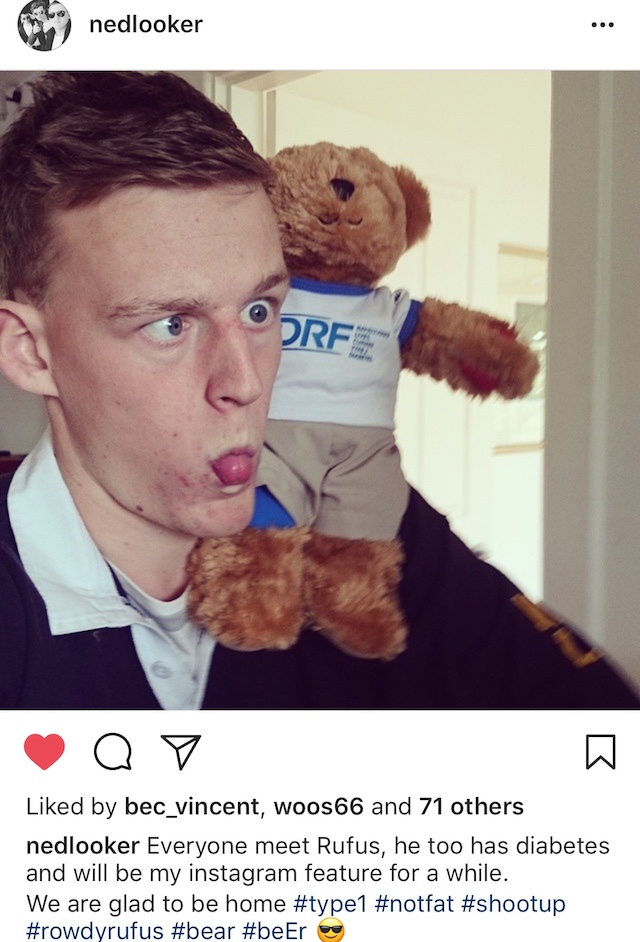My younger brother (Ned, who is now 21) is incredibly healthy and active. He plays golf almost daily, cricket on the weekends and when he’s bored he chucks on his sand shoes and goes for a run. He probably eats a bit more bacon that your daily limit recommends but all in all, he does pretty well for himself.
 Fierce.
Fierce.
When he was in year 12 at school he was diagnosed with Type 1 Diabetes, which came TOTALLY out of the blue for our family.
For a few weeks Ned was lethargic, had a few headaches, poor eyesight, and drank more water than we thought was humanly possible. We put this down to the fact he was a typical 17 year old boy that was growing into a 6ft man while trying to get on with his year 12 assignments.
One weekend, I was house sitting for a family friend and Mum and Dad were in Melbourne for a couple of nights, so Ned was left at home to his own devices. He said he wasn’t feeling well so he was in for a quiet weekend.
We didn’t hear from him much more over the weekend, which was pretty normal for the teenage version of Ned – and he spent most of his weekend sleeping and eating, and then sleeping some more.
On the Monday he was feeling really crappy. He was sleeping a lot and his body was constantly exhausted – it felt like he was battling a bad flu. He called me to take him to the doctors but I was on the other side of town and wouldn’t be able to get there in time for the appointment, so he drove himself (in hindsight, this was a terrible idea). They took some blood and instructed him to go home and rest – so that’s what he did.
Mum and Dad got home that evening and found Ned fast asleep which was unusual, but they left him to it thinking he was still getting over the flu.
A couple of hours later, Ned finally walked out and said hello (I’m pretty sure he was eating a Mars Bar ice-cream, also a bad idea in hindsight) and at almost that exact moment the phone rang. It was our family doctor from the local clinic, who said to my Dad:
“Get Ned in the car right now and take him directly to the emergency room at the hospital. I’ll ring ahead and let them know to expect you”
So that’s exactly what they did – he was 17 years old so still young enough to be admitted to the Women’s & Children’s hospital and gifted with a bear named Rufus. It was here that he was first treated for Type 1 Diabetes – an auto-immune condition in which the immune system is activated to destroy the cells in the pancreas which produces insulin.
In one week he had lost 10kg (he was already athletically built so there wasn’t much to lose), and his blood sugar levels were 6 times higher than a non-diabetic’s limit, which left him on the brink of a coma.
My brother then spent the next couple of days in hospital learning how to test his own blood sugar levels, and how to inject himself with insulin a minimum of 4 times a day. He learnt how to use Jatz biscuits and jelly beans to bring his levels back up again. My family learnt how to use Glucagon in case we found him in a coma and how to cook meals that would keep his levels at a steadier rate. We learnt that the effects of low blood sugar could make you feel “drunk”, making drinking significantly more dangerous – which for a guy about to turn 18 was really scary.
They told us that at any point in time, Ned is always 7 hours away from death if his condition is not handled carefully.
Not once have I ever heard him complain.
 Rufus is used to show kids which areas they can inject into.
Rufus is used to show kids which areas they can inject into.
We know how lucky we are in the scheme of things – diabetes is something that can be controlled and kept steady, and while there are some risks and scary moments we know that Ned is smart in how he manages himself. We are also so grateful for all the research that is being conducted every day – already Ned has started using a transmitter that is embedded in his belly, that allows our whole family to read his blood sugar levels from our phones in case of emergency. We believe (and hope!) that in Ned’s lifetime, he will see a solution to the injections.
 Ned’s watch can update him on his blood sugar levels and his tattoo can alert paramedics to his condition.
Ned’s watch can update him on his blood sugar levels and his tattoo can alert paramedics to his condition.
I wanted to write about Ned’s experience because I was completely naive when it came to diabetes. I had heard warnings that eating and drinking a lot of sugary, bad foods caused diabetes and disregarded it because our family was so healthy. Little did I know that Type 1 diabetes can happen to anyone – it is not linked to modifiable lifestyle factors, there are no cures and it cannot be prevented.
I guess the final piece of advice is to trust your gut feeling – the symptoms are obvious so if something feels off or if you can see the below symptoms in someone you know, encourage them to get checked out – if anything, it’s comforting to have peace of mind that everything is A-OK.
Millie x
SYMPTOMS OF TYPE 1 DIABETES
- Being excessively thirsty
- Passing more urine
- Feeling tired and lethargic
- Always feeling hungry
- Having cuts that heal slowly
- Itching, skin infections
- Blurred vision
- Unexplained rapid weight loss
- Mood swings
- Headaches
- Feeling dizzy
- Leg cramps.
To learn more about Type 1 Diabetes, head to their website.
You can also support the ongoing research projects that are funded by JDRF here.










Hi, can I please get the details of the transmitter and watch (including the app/widget)? Thank you 🙂
Hey Savi – sorry for the delay! The transmitter is dexcom g5 which goes to your phone, and then the watch is a Garmin Fenix 5 with CGM Watch 2 app. There is a bunch of stuff that needs to be set up in the background to link in the website as well. Hope this helps! Millie xx
Great insightful piece Millie…thanks